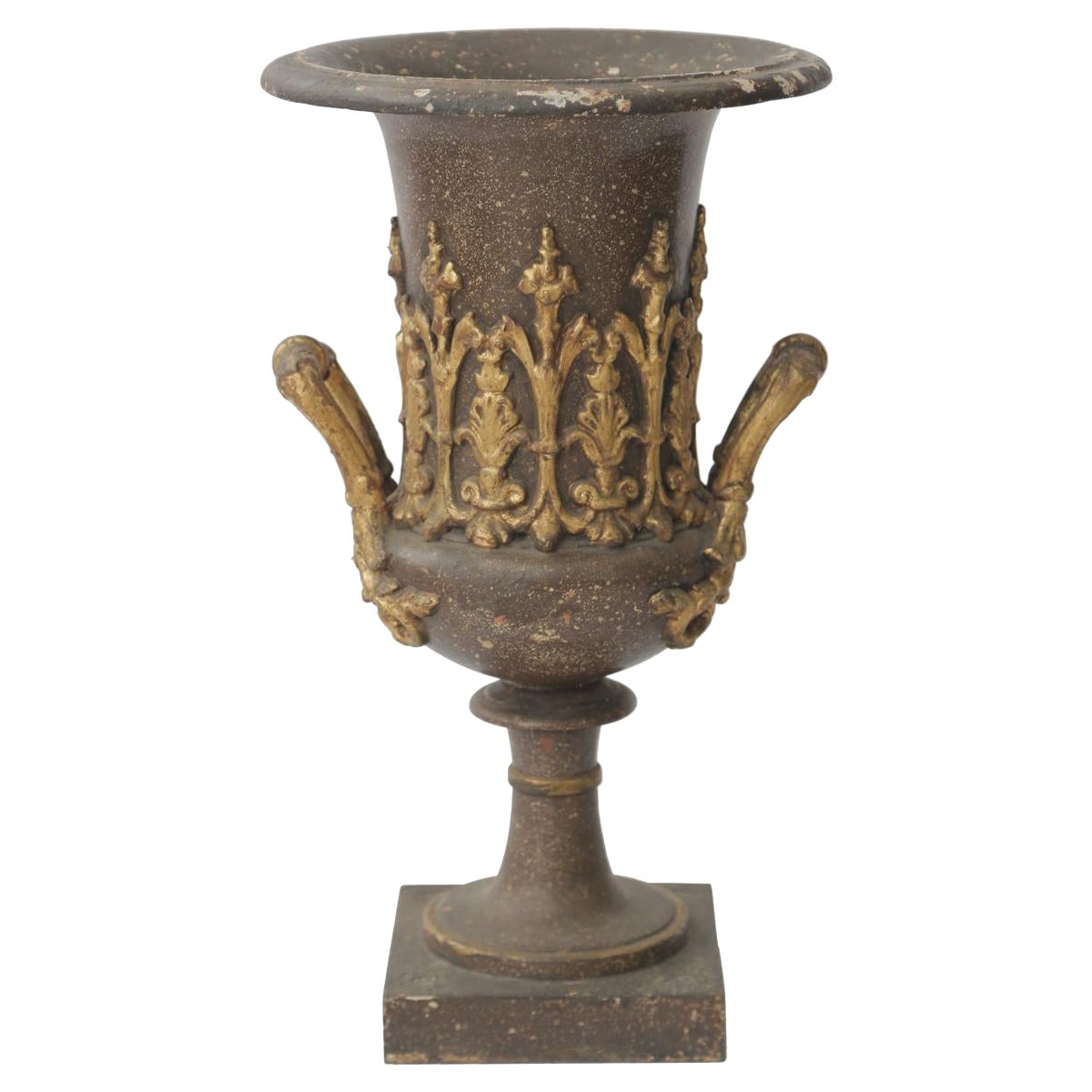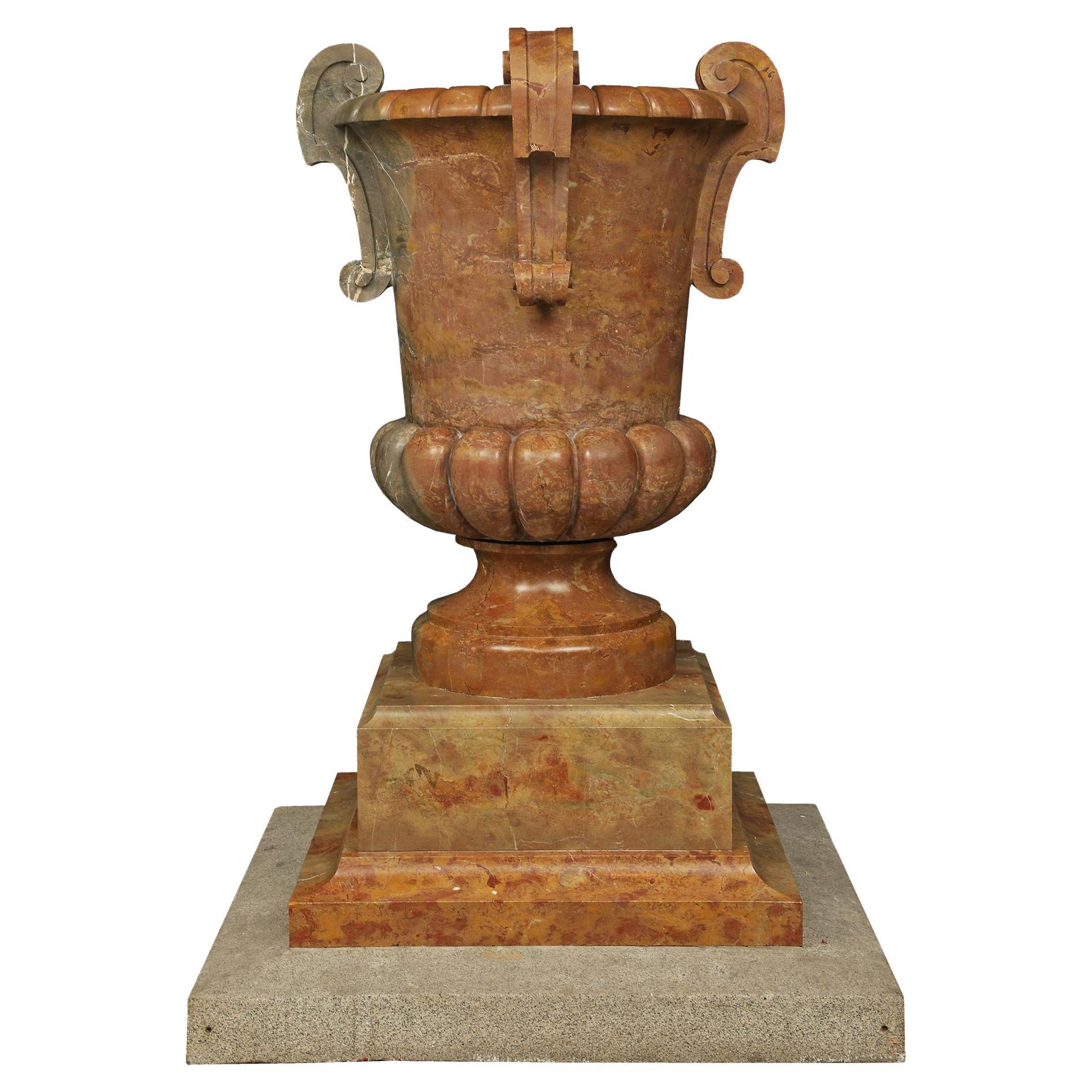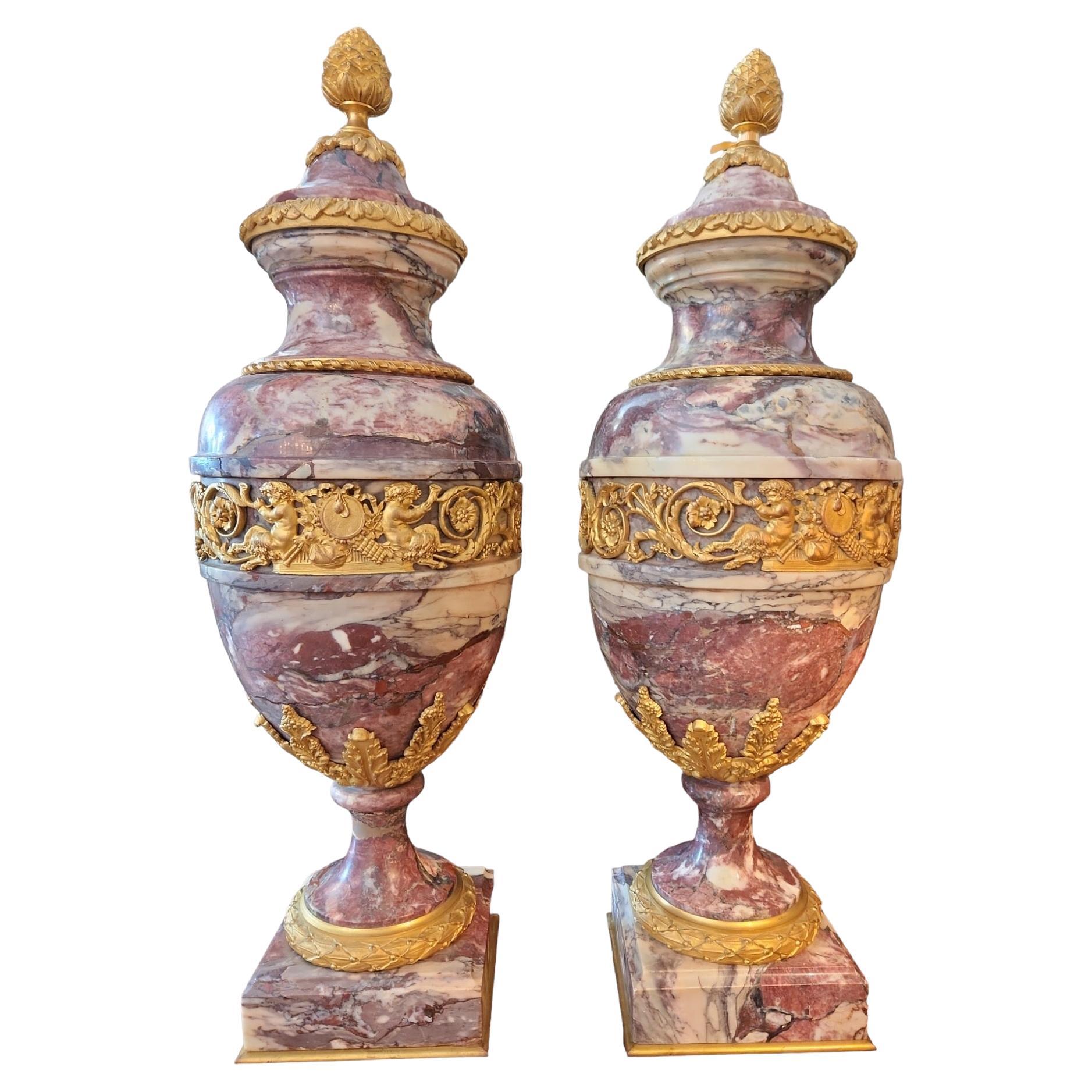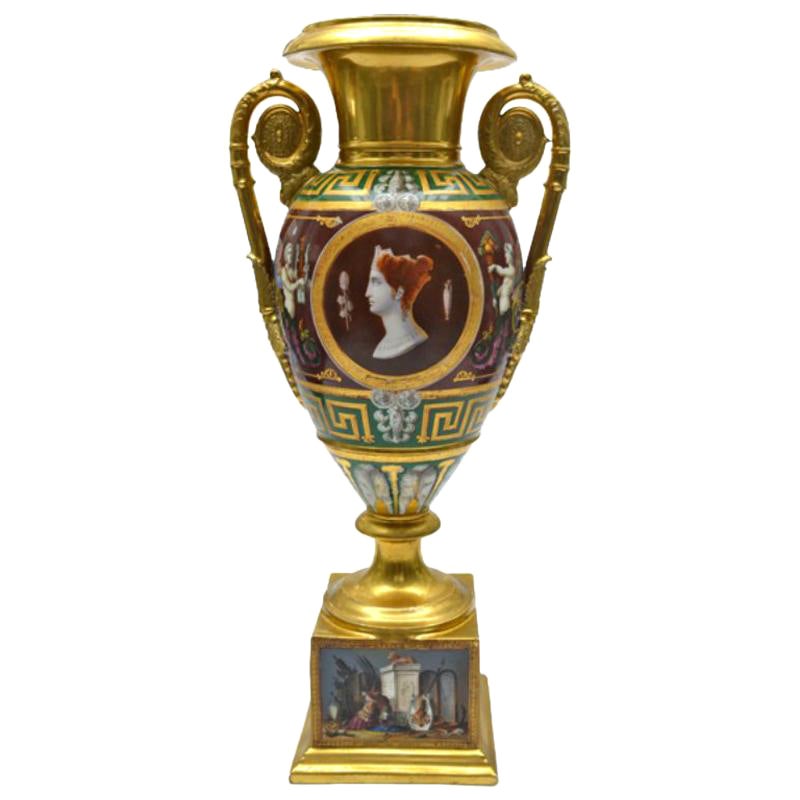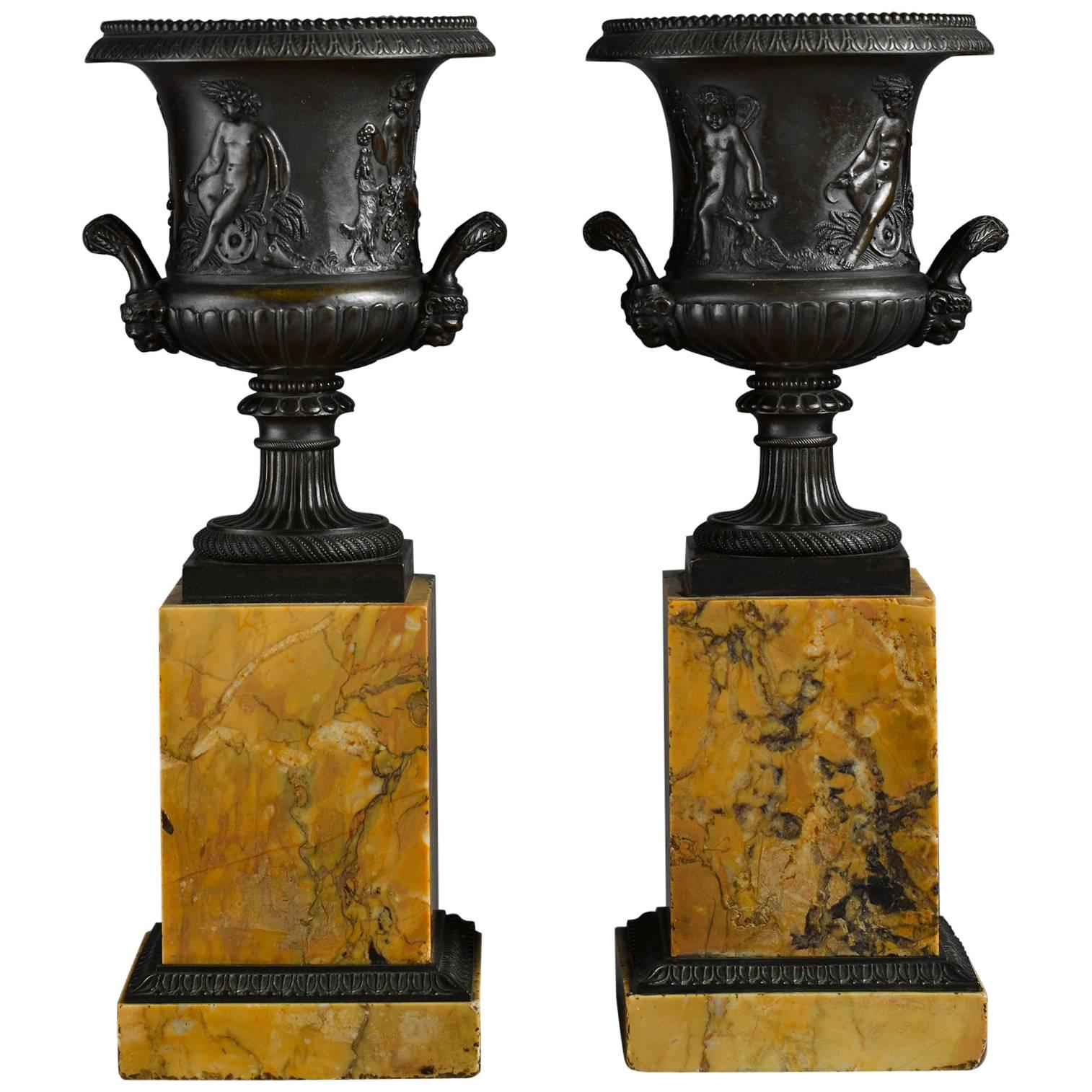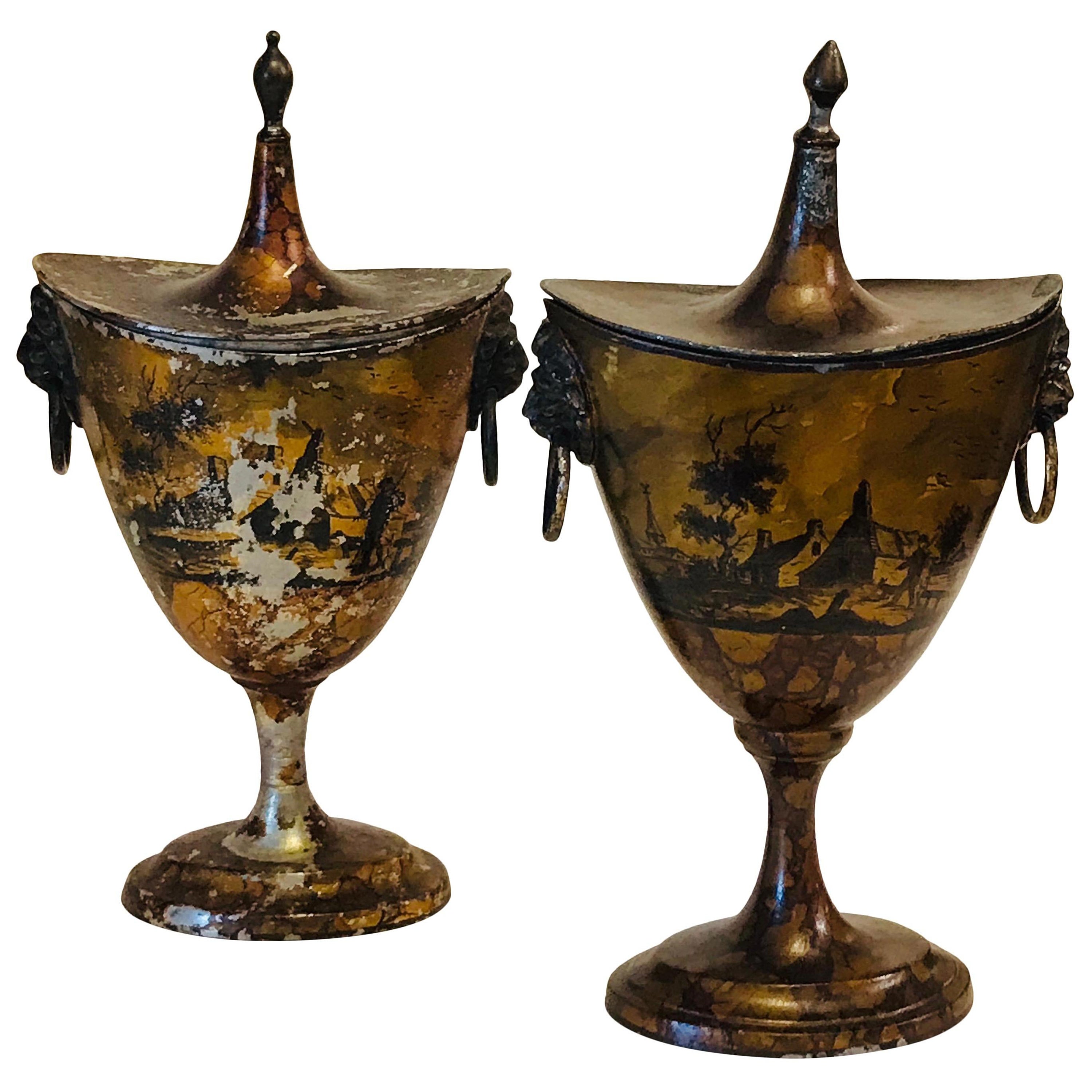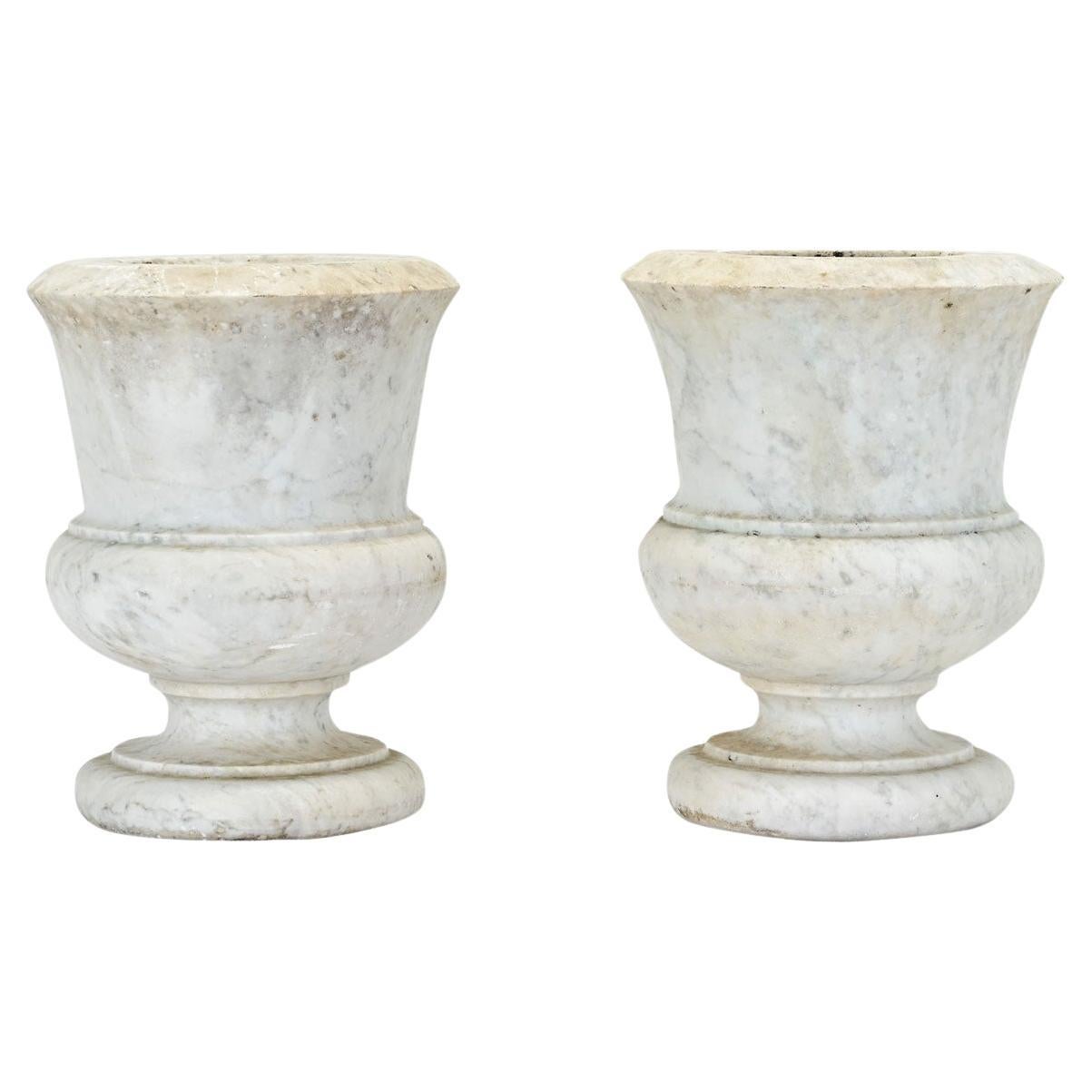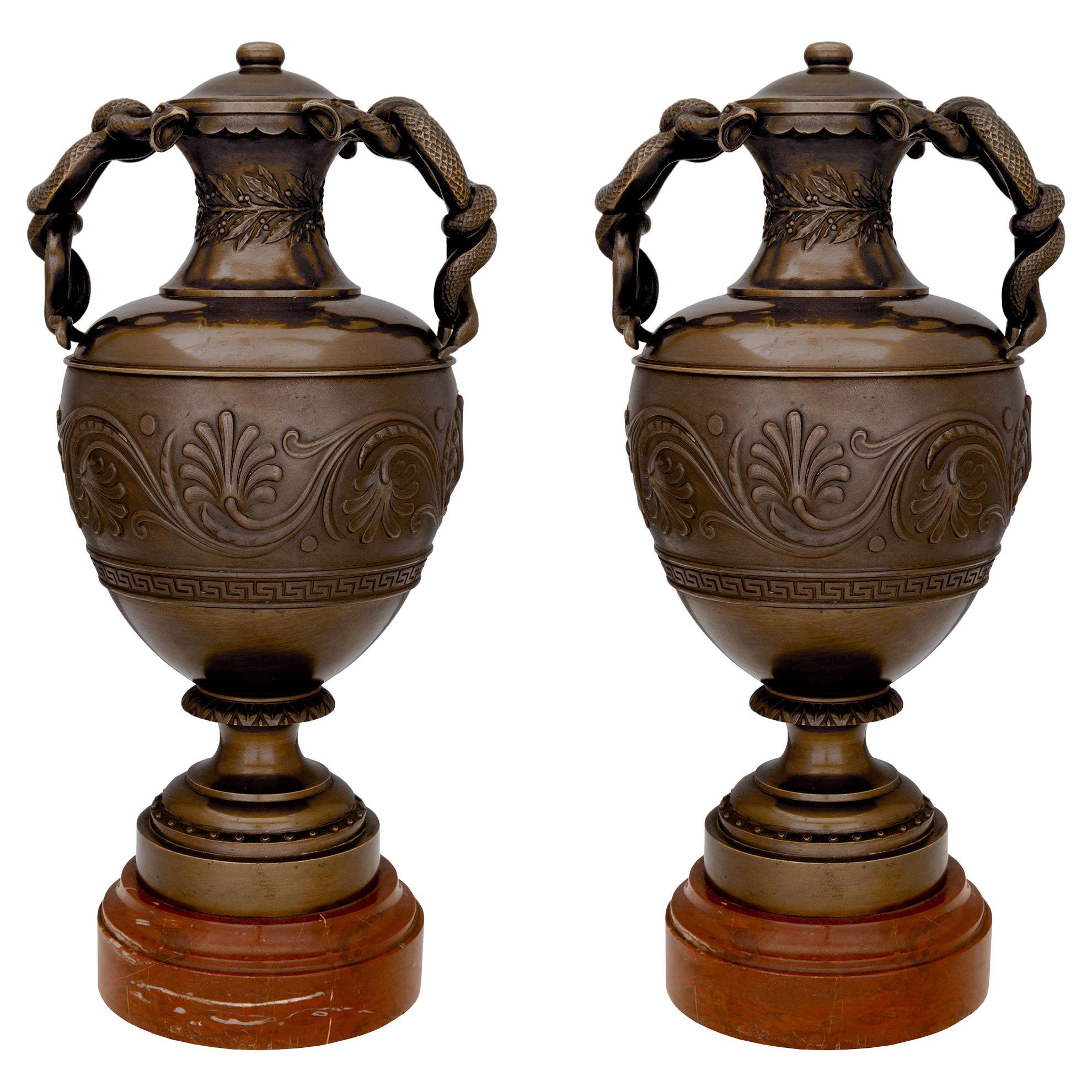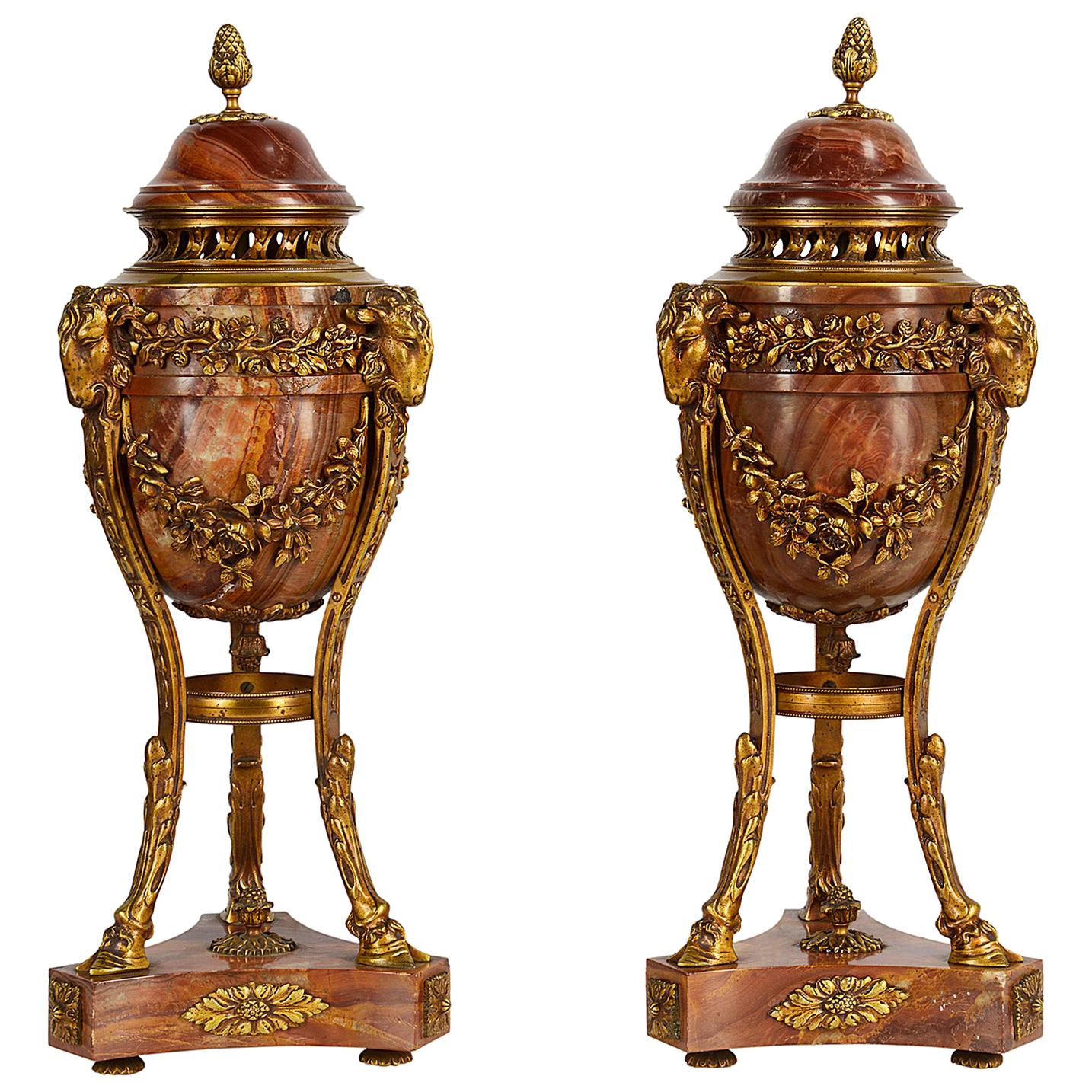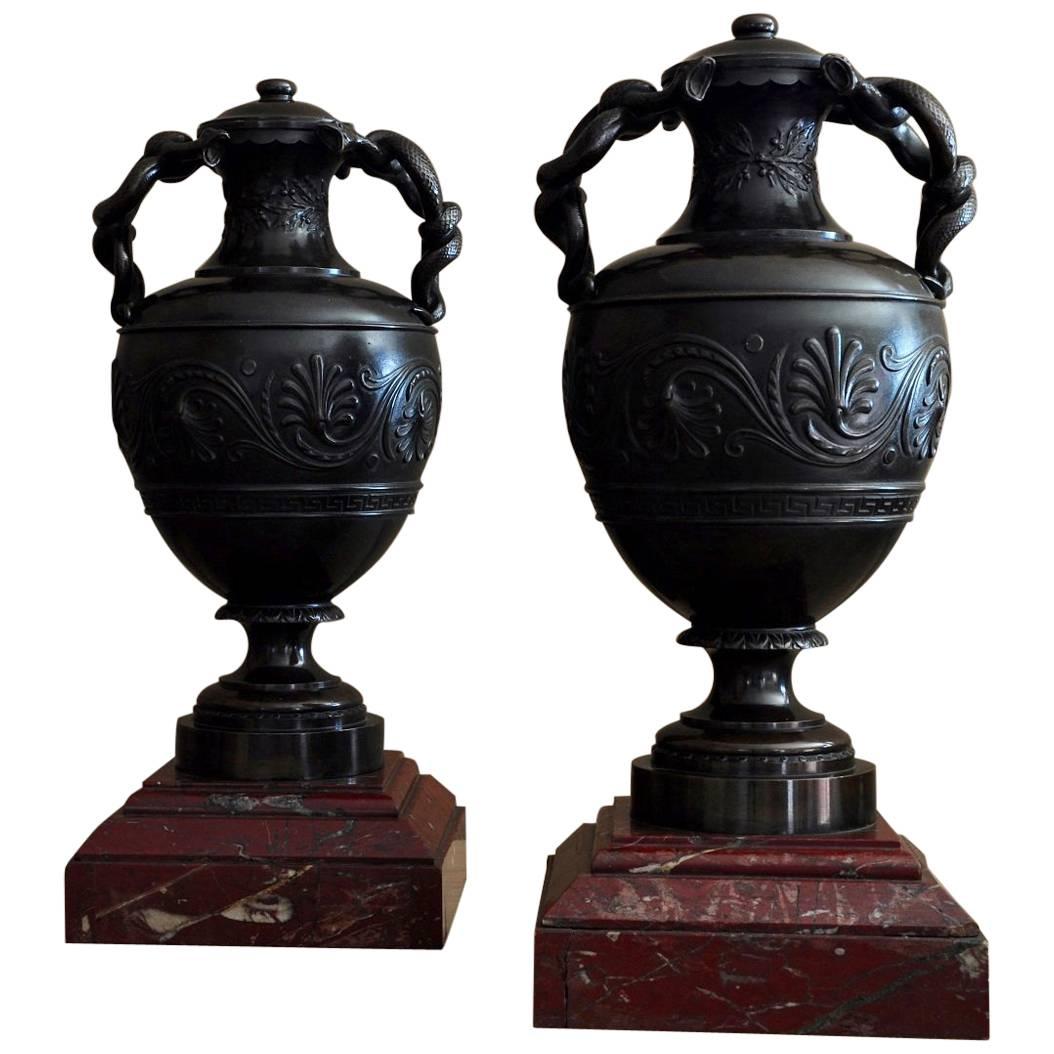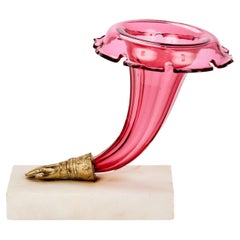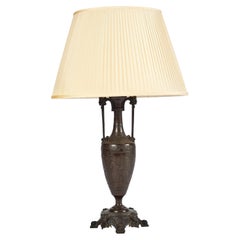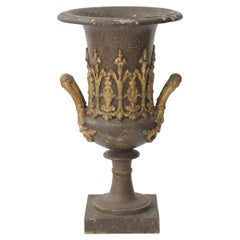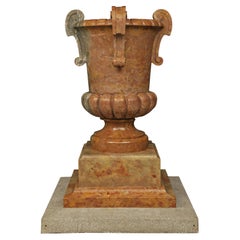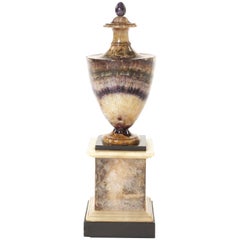
Early 19th Century Blue John and Marble Urn
View Similar Items
Want more images or videos?
Request additional images or videos from the seller
1 of 6
Early 19th Century Blue John and Marble Urn
About the Item
- Dimensions:Height: 13.39 in (34 cm)Width: 4.34 in (11 cm)Depth: 4.34 in (11 cm)
- Style:Neoclassical (Of the Period)
- Materials and Techniques:
- Place of Origin:
- Period:
- Date of Manufacture:circa 1810
- Condition:Wear consistent with age and use. Reduced in height at the stem.
- Seller Location:Henley-on-Thames, GB
- Reference Number:1stDibs: LU272239199441
About the Seller
5.0
Vetted Seller
These experienced sellers undergo a comprehensive evaluation by our team of in-house experts.
Established in 2016
1stDibs seller since 2017
41 sales on 1stDibs
More From This SellerView All
- A mid 19th century French Cranberry glass and gilt bronze mounted cornucopiaLocated in Henley-on-Thames, OxfordshireA mid 19th century cranberry or ruby glass, gilt bronze and marble mounted cornucopia. This stylish chimney ornament has a cranberry cornucopia of trumpet shape which has a flared ri...Category
Antique 1860s French Vases
MaterialsMarble, Bronze
- 19th Century French Neo-Greek Classical Bronze Lamp by Henry CahieuxBy Henry Cahieux and Ferdinand BarbedienneLocated in Henley-on-Thames, OxfordshireA 19th century French Neo-Greek Classical bronze lamp by Henry Cahieux probably cast by the Barbedienne foundry, Paris and inscribed Hy Cahieux, 21.5cm...Category
Antique Late 19th Century French Classical Greek Table Lamps
MaterialsBronze
$1,430 Sale Price30% Off - Large Early 19th Century Painted and Silkwork Picture 'The Good Samaritan'Located in Henley-on-Thames, OxfordshireThe picture retains its original gilt frame. The image is rendered in a mixture of silkwork and hand painted decoration and depicts the injured traveler on the roadside being aided by the Samaritan while the Levite and the Priest are seen in the distance. This parable is told by Jesus in the Gospel of Luke. A certain man was going down from Jerusalem to Jericho, and he fell among robbers, who both stripped him and beat him, and departed, leaving him half dead. By chance a certain priest was going down that way. When he saw him, he passed by on the other side. In the same way a Levite also, when he came to the place, and saw him, passed by on the other side. But a certain Samaritan, as he travelled, came where he was. When he saw him, he was moved with compassion, came to him, and bound up his wounds, pouring on oil and wine. He set him on his own animal, and brought him to an inn, and took care of him. On the next day, when he departed, he took out two denarii, gave them to the host, and said to him, 'Take care of him. Whatever you spend beyond that, I will repay you when I return.' Now which of these three do you think seemed to be a neighbor to him who fell among the robbers?" This work is vastly bigger than 19th century silkwork pictures...Category
Antique Early 19th Century English George IV Tapestries
MaterialsSilk, Giltwood
$1,213 Sale Price24% Off - Four French Mid-19th Century Bronze and Sienna Marble Candlesticks by DeniereBy Maison DeniereLocated in Henley-on-Thames, OxfordshireA set of four French mid-19th century patinated bronze and Yellow Sienna marble candlesticks by Deniere, Paris Each tri-form column surmounted by a candleholder and foliate drip-pan,...Category
Antique Mid-19th Century French Candlesticks
MaterialsSiena Marble, Bronze
$5,620 Sale Price21% Off - English Mid-19th Century Octagonal Ashford Black Marble and Inlaid Table TopLocated in Henley-on-Thames, OxfordshireAn English mid-19th century octagonal black marble and pietre dure inlaid tabletop by William Adam for the Ashford Works and Old Royal Museum, Matlock Centred by a sprig of flowers ...Category
Antique Mid-19th Century English Tables
MaterialsMarble
$7,664 Sale Price20% Off - Mid-19th Century Mahogany, Needlepoint and Upholstered OttomanLocated in Henley-on-Thames, OxfordshireThe rectangular hinged top retains it’s covered in charming 19th century needlework while the sides have been reupholstered, the top is hinged ...Category
Antique Late 19th Century English Victorian Ottomans and Poufs
MaterialsMahogany
$625 Sale Price30% Off
You May Also Like
- 19th Century Marble UrnLocated in Charlottesville, VAThis is a classical urn. Use indoors or out.Category
Antique 19th Century Urns
MaterialsMarble
- Early 19th Century Bronze Campana UrnLocated in West Palm Beach, FLGrand Tour urn, of bronze, with a gilt and patented finish showing natural wear, having a column-snape urn-form; its down-turned bezel over its body, de...Category
Antique Late 19th Century European Neoclassical Urns
MaterialsBronze
- Italian 19th Century Marble UrnLocated in West Palm Beach, FLA handsome and large scale handsome Italian 19th century marble urn. The impressive urn is raised by a square stepped base below the elegant ...Category
Antique 19th Century Italian Urns
MaterialsMarble
- 19th Century French Bronze-Mounted Marble UrnsLocated in Los Angeles, CAThe finest of bronze castings. Lids are attached. The base is 6" x 6".Category
Antique Late 19th Century French Neoclassical Urns
MaterialsMarble, Bronze
$12,500 / set - Pair Early 19th Century Blue John Cassolettes with Ormolu MountsLocated in Dublin 8, IEPair early 19th Century Blue John cassolettes with ormolu mounts each with an ovoid body applied with decorative mounts and scrolling foliate handles, beneath a removable cover toppe...Category
Antique 19th Century English Neoclassical Urns
MaterialsOrmolu
- Early 19th Century Paris Porcelain UrnLocated in Vancouver, British ColumbiaA museum quality early 19th century Paris porcelain urn. The twin handled vase sits on a rectangular porcelain base (modelled as part of the vase), which is decorated on all four sides with finely painted scenes titled 'Gene de Corrinte', 'Gene de Mytilene', 'Gene de Sparte', and 'Gene de Chiu' in reference to various Greek city states. The ovoid body of the vase is richly decorated with Greek key and stylized acanthus designs over and below a large gilt framed oval cameo of Athena on one side and a similar cameo on the other side bearing an undecipherable name. The overall background colour scheme of the vase is dark red/burgundy and dark emerald green, two colours which were more commonly used by the Dagoty factory in Paris than other porcelain manufacturing firms at the time. The vase is unsigned. Note: Pierre Louis Dagoty's porcelain was characterized by the use of vivid colours and the thick application of burnished gold leaf. He borrowed from the repertoire of Neoclassical ornament but his designs also included Egyptian and Chinoiseries motifs. Dagoty's elegant ceramics won him the patronage of Empress Joséphine. At the height of production, in 1807, he employed over a hundred workers, and exported his wares to Russia. After the fall of the First French Empire in 1814, manufacture continued under the Duchesse d'Angoulême, the only surviving child of Louis XVI and Marie-Antoinette. Between 1816 and 1820, Dagoty worked in partnership with François Maurice Honoré. In 1817. Dagoty and Honoré received a commission from President James Monroe...Category
Antique 1810s French Empire Urns
MaterialsPorcelain

